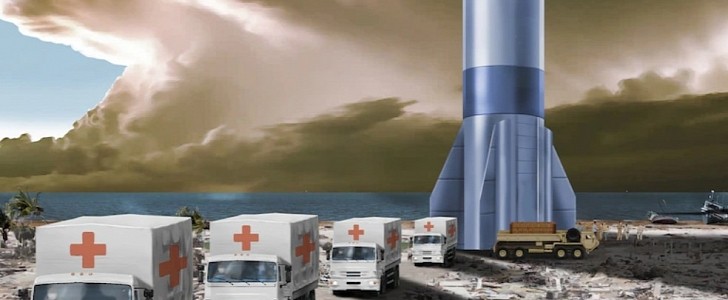The U.S. Air Force announced on June 4th its plans to use large commercial rockets for Department of Defense global logistics as part of its fourth Vanguard program. Named “Rocket Cargo,” the project is part of a transformational science and technology portfolio.
While cargo transportation via rockets is not a new notion, high launch costs and restricted payload capabilities have limited logistics-focused applications in the past. However, as technology advances, so do the means for creating large commercial rockets and reusable stages that safely land back on Earth, boosting cargo capacity and significantly cutting launch costs.
The Air Force will use the new Rocket Cargo Vanguard to assess the viability and utility of large commercial rockets for Department of Defense global logistics. The Air Force Research Laboratory will investigate and develop the ability to land a rocket on various non-traditional materials and surfaces, even in remote locations.
Furthermore, scientists and engineers will study the ability to „land a rocket near personnel and structures, engineer a rocket cargo bay and logistics for rapid loading and unloading, and air drop cargo from the rocket after re-entry in order to service locations where a rocket or aircraft cannot possibly land.”
Currently, the Air Force is evaluating new rocket capabilities and its potential use to transport cargo fast across the world. The Rocket Cargo Vanguard program may involve mission applications in which the rocket is utilized to carry equipment needed to quickly restore a loss of mission operations, as well as supplies and disaster relief payloads to affected areas.
Rocket Cargo joins three other current Vanguard programs: Skyborg, an autonomy core system in an unmanned aerial platform that enables autonomous operations; NTS-3, a flight experiment designed to examine and field capabilities across the ground, space, and user segments to improve space-based positioning, navigation, and timing; and Golden Horde, an initiative to demonstrate autonomous collaborative operations.
By implementing these programs, the U.S. Air Force seeks to create new operational capabilities that will provide warfighters a competitive advantage on the battlefield in the next decade.
The Air Force will use the new Rocket Cargo Vanguard to assess the viability and utility of large commercial rockets for Department of Defense global logistics. The Air Force Research Laboratory will investigate and develop the ability to land a rocket on various non-traditional materials and surfaces, even in remote locations.
Furthermore, scientists and engineers will study the ability to „land a rocket near personnel and structures, engineer a rocket cargo bay and logistics for rapid loading and unloading, and air drop cargo from the rocket after re-entry in order to service locations where a rocket or aircraft cannot possibly land.”
Currently, the Air Force is evaluating new rocket capabilities and its potential use to transport cargo fast across the world. The Rocket Cargo Vanguard program may involve mission applications in which the rocket is utilized to carry equipment needed to quickly restore a loss of mission operations, as well as supplies and disaster relief payloads to affected areas.
Rocket Cargo joins three other current Vanguard programs: Skyborg, an autonomy core system in an unmanned aerial platform that enables autonomous operations; NTS-3, a flight experiment designed to examine and field capabilities across the ground, space, and user segments to improve space-based positioning, navigation, and timing; and Golden Horde, an initiative to demonstrate autonomous collaborative operations.
By implementing these programs, the U.S. Air Force seeks to create new operational capabilities that will provide warfighters a competitive advantage on the battlefield in the next decade.

